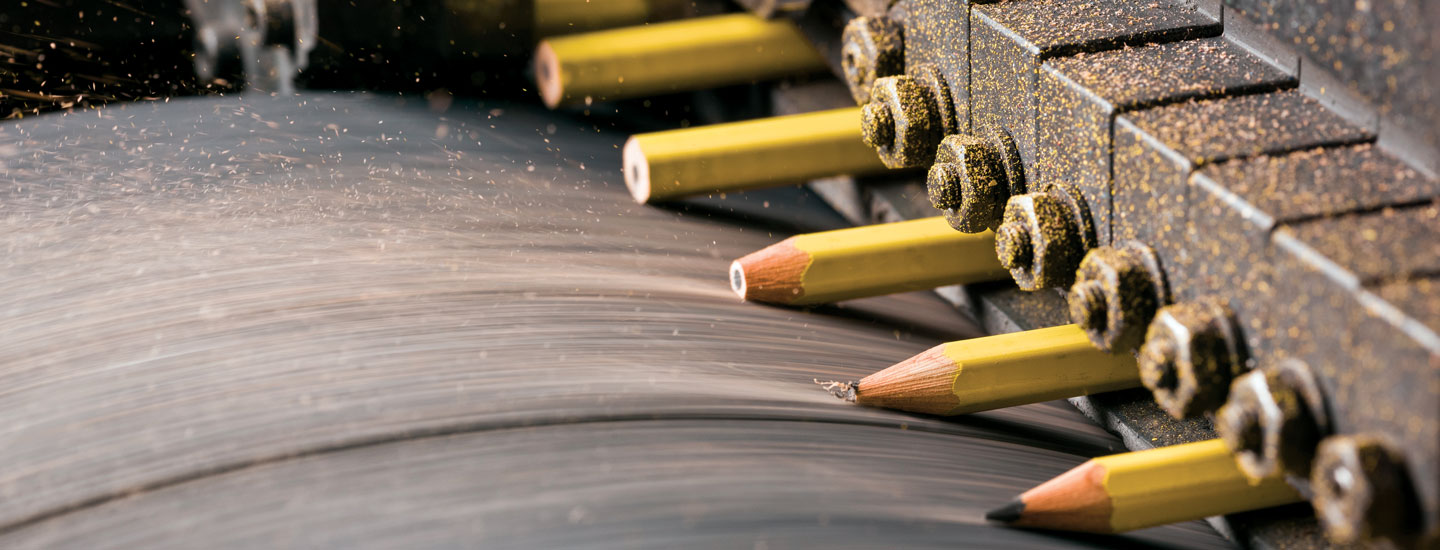ALEXA KURZIUS
Alexa Kurzius at the General Pencil Company in New Jersey
Think about how many times in your life you’ve used a No. 2 pencil. It’s a trusty standby for filling out tests, graphing data, or taking notes in class. But it’s likely that you’ve never thought much about how pencils are made. I hadn’t either, until I visited America’s oldest pencil factory last year.
Founded in 1889, General Pencil Company has been manufacturing pencils for more than 100 years at its factory in Jersey City, New Jersey. It’s one of the last remaining pencil factories in the U.S. Nearly all other pencil manufacturers have either gone out of business or relocated their factories to other countries.
How many times in your life have you used a No. 2 pencil? It’s a trusty tool for filling out tests, graphing data, or taking notes in class. But you’ve probably never thought much about how pencils are made. I hadn’t either. Then I visited America’s oldest pencil factory last year.
General Pencil Company was founded in 1889. It’s been making pencils for more than 100 years at its factory in Jersey City, New Jersey. That’s one of the last pencil factories left in the U.S. Most other pencil makers have either gone out of business or moved their factories to other countries.


 Machines mix clay, water, and graphite, a form of the element carbon (C), to make the pencil core—the part of the pencil that marks the paper.
Machines mix clay, water, and graphite, a form of the element carbon (C), to make the pencil core—the part of the pencil that marks the paper. Machines compress the graphite under great pressure to remove any air. Then it’s cut into cylinders to form the cores and baked.
Machines compress the graphite under great pressure to remove any air. Then it’s cut into cylinders to form the cores and baked. Pencil cores move into the grooves of a wheel turning on an axle. The wheel drops the cores into slotted cedar planks.
Pencil cores move into the grooves of a wheel turning on an axle. The wheel drops the cores into slotted cedar planks. Two cedar planks are glued together with the cores inside. Clamps apply pressure so the glue holds. Then the sandwiched planks are cut into individual pencils.
Two cedar planks are glued together with the cores inside. Clamps apply pressure so the glue holds. Then the sandwiched planks are cut into individual pencils. Conveyors carry ferrules—the metal bands that go on the tops of pencils—up a curved inclined plane, or ramp.
Conveyors carry ferrules—the metal bands that go on the tops of pencils—up a curved inclined plane, or ramp. Pencils get painted with four to six coats of yellow paint. Finally, a tipping machine attaches a ferrule and an eraser to the end of each. Happy writing!
Pencils get painted with four to six coats of yellow paint. Finally, a tipping machine attaches a ferrule and an eraser to the end of each. Happy writing!